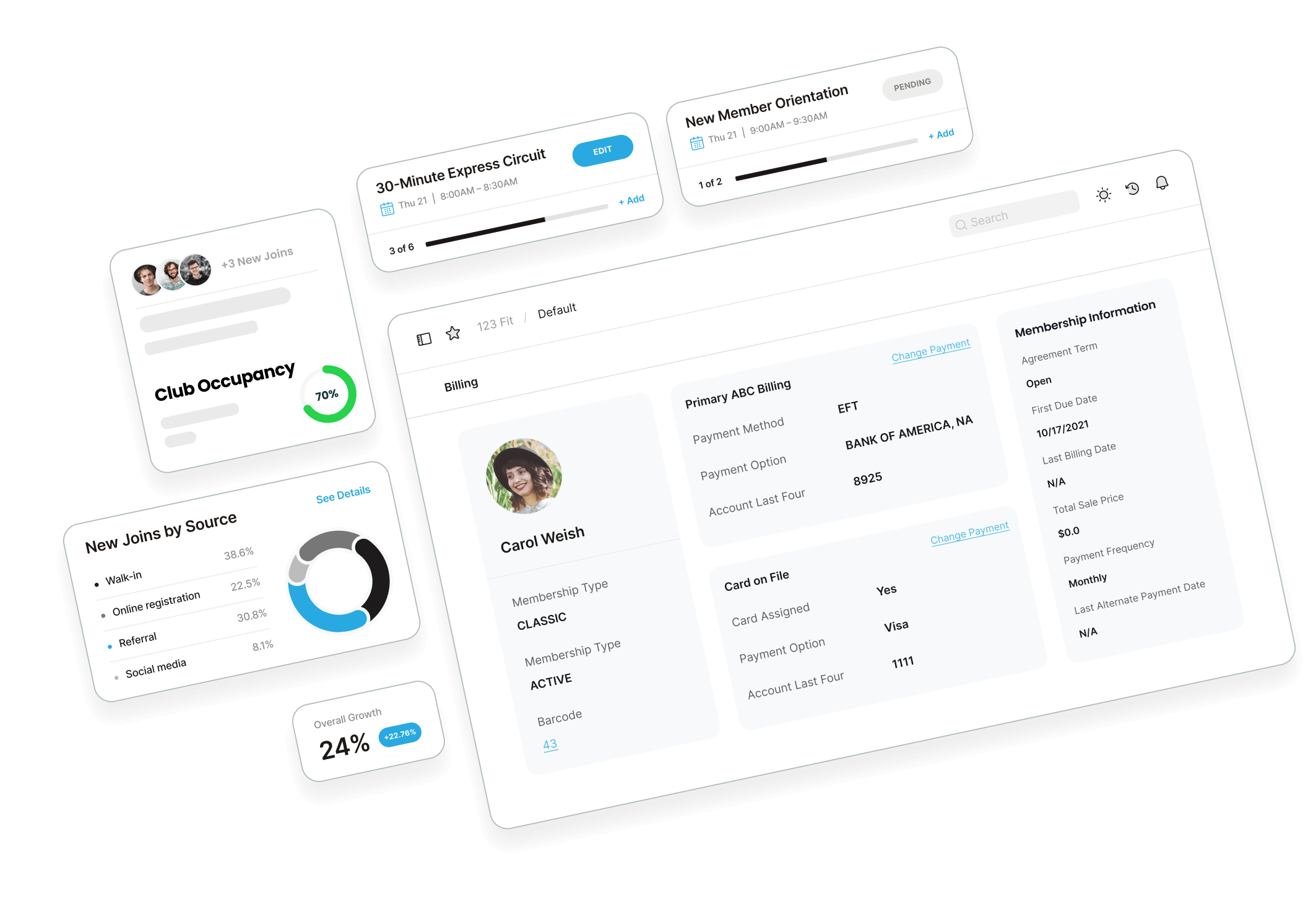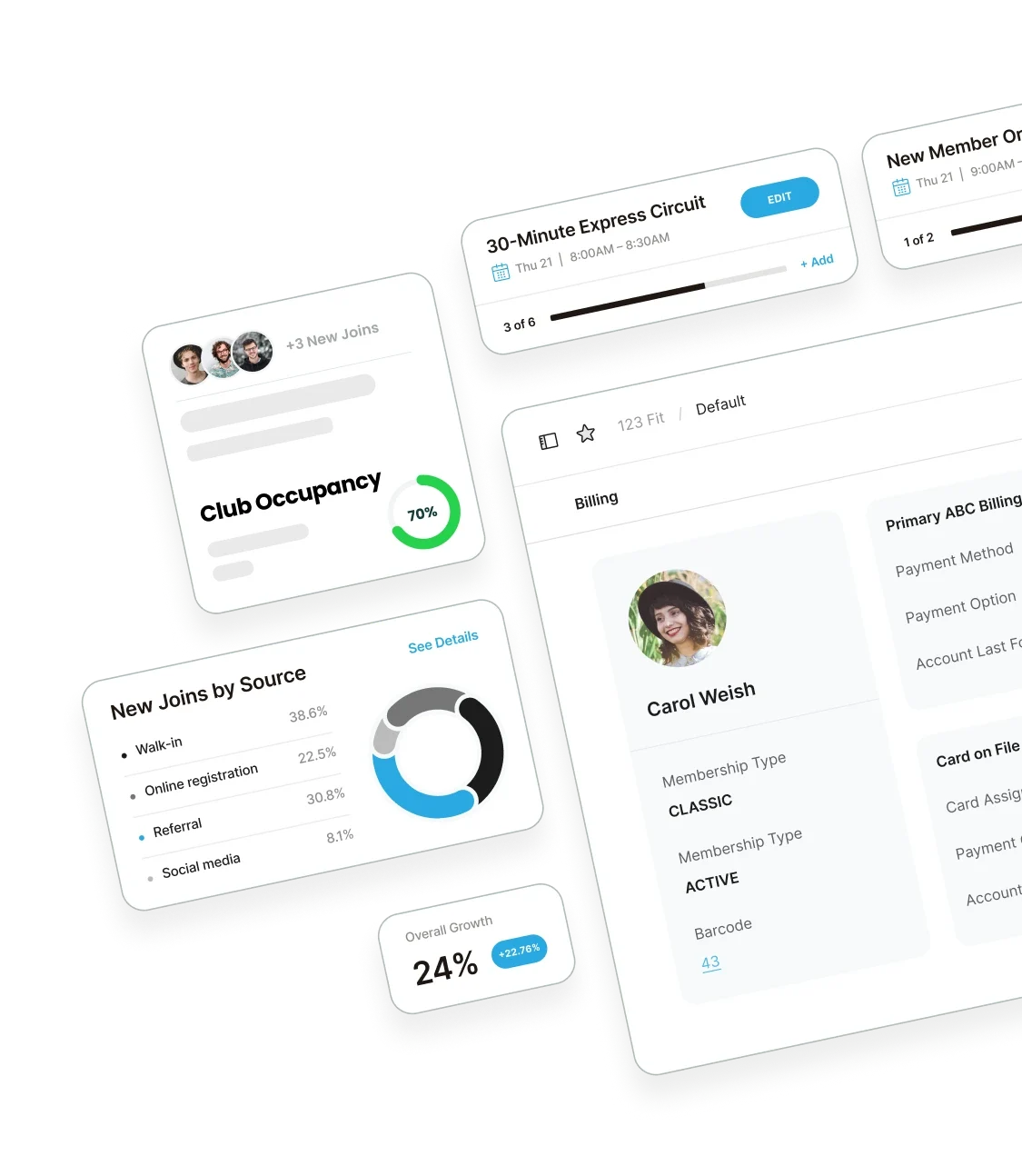The 6 Biggest Challenges Of Owning A Gym
Do you dream of owning a gym? You’re certainly not alone.
The fitness and health club industry generates over $30B in the United States annually and is in the midst of a post-pandemic resurgence. The industry also offers a unique opportunity to promote healthy lifestyles and help people improve their health and well-being—making it a great place to make a difference.
Before diving headfirst into gym ownership, however, there are a few essential considerations you must make. By considering these five key factors before embarking on your gym ownership journey, you will be better equipped to navigate the challenges and set yourself up for success.
1. Plan Your Club Finances
Financial planning is crucial when it comes to owning a gym. Begin by assessing your budget and determining how much capital you can allocate to your new business. This includes:
Start-Up Costs: In addition to the cost of leasing or purchasing a space, you’ll need to factor in expenses including:
- Equipment purchases
- Facility renovations
- Licenses
- Permits
- Insurance
- Marketing expenses
- Staff salaries
It’s recommended to work with an accountant or financial advisor to create a realistic financial plan that aligns with your goals.
Cash Flow Management: Make sure you have a clear understanding of your monthly expenses, including rent, utility bills, maintenance costs, and employee wages. Planning your cash flow effectively will ensure you have enough working capital to cover your ongoing expenses.
2. Have a Comprehensive Business Plan
A well-crafted business plan is the foundation of owning a gym. It outlines your mission, target audience, marketing strategies, revenue projections, and operational procedures. Here’s how to get started:
Market Research: This is where you determine what type of gym you want to open. Take the time to research your local market and analyze your competition. Identify your target audience and understand their preferences, demographics, and purchasing behaviors. This information will help you tailor your offerings to meet their needs effectively.
Unique Selling Proposition: Determine what sets your gym apart from the competition. Highlight your unique features, such as specialized training programs, state-of-the-art equipment, knowledgeable staff, or exceptional customer service. Emphasize how these factors will benefit potential members and differentiate your gym in the market.
Membership Types: What kind of memberships will you offer and how will you keep your members engaged? You may want to consider offering two or three tiers of memberships to give your members the ability to cater their membership to their fitness needs and budget.
Marketing and Sales Strategies: Develop a comprehensive marketing plan that outlines how you will attract and retain gym members. Consider employing various channels, such as social media, email marketing, local advertising, and community partnerships. Create a sales strategy that includes membership pricing, promotions, and referral programs to incentivize new sign-ups.
3. Purchase the Right Equipment
Carefully selecting the right equipment and designing an efficient gym layout are vital to creating an inviting and functional space for your members. Here’s what you need to consider:
Equipment Selection: Research the latest trends in fitness equipment and ensure you invest in high-quality, durable machines that suit your members’ needs. Consider the types of activities you want to offer, such as cardio, strength training, functional training, or group classes, and equip your gym accordingly.
Gym Lay Out: Plan your gym lay out strategically, optimizing the use of available space. Create separate areas for different activities to accommodate various workout preferences. Designate specific zones for cardio machines, weightlifting areas, functional training spaces, and group exercise studios. Make sure there is ample room for members to move comfortably and safely between equipment.
Safety and Maintenance: Prioritize the safety of your members by ensuring equipment is properly maintained and regularly inspected. Create clear signage and instructions for equipment usage to minimize the risk of accidents. Establish a maintenance schedule to address equipment repairs and replacements promptly.
4. Hire Staff with Member Experience in Mind
Your staff plays a crucial role in delivering an exceptional member experience. Hiring qualified and friendly fitness professionals who align with your gym’s values is essential to owning a gym. Here’s what you need to know:
Staffing Considerations: Determine the number of staff members you’ll need based on the size of your gym and the services you offer. Hire staff who possess the necessary certifications and experience to provide expert guidance to your members. Look for candidates who are passionate about fitness and have strong communication skills.
Ongoing Training: Prioritize ongoing staff training and development to ensure your team stays up-to-date with industry trends and can deliver personalized attention to your members. Encourage your staff to pursue certifications and attend workshops or conferences to enhance their skills and knowledge.
Member Engagement: Focus on fostering a positive and inclusive gym culture that encourages member engagement and creates a supportive community. Offer a variety of fitness classes, workshops, and events to keep members motivated and connected. Create opportunities for members to provide feedback and actively address their concerns or suggestions.
5. Ensure Legal Compliance
Owning and operating a successful gym means complying with all legal requirements and regulations. Here are a few things you need to keep in mind:
Certifications: If you plan to have personal trainers or group fitness instructors, make sure they’re certified! Certifications show your members that you have proven industry standards and that you’re serious about what you do. Many certifications can be obtained through the American Council on Exercise (ACE).
Licensing and Permits: Research the licensing and permit requirements in your area, including business permits, health department certifications, and zoning regulations. Secure all necessary documentation to operate your gym legally.
Insurance Coverage: Protect your business and your members by obtaining appropriate insurance coverage. Consult with an insurance professional who specializes in the fitness industry to determine the types of coverage you need, such as general liability insurance, property insurance, and professional liability insurance.
Contracts and Waivers: Create legally sound contracts and waivers for your members to sign. These documents should outline the terms and conditions of membership, liability disclaimers, and member responsibilities. Consult with a lawyer to ensure these documents are comprehensive and enforceable.
6. Streamline Operations with Gym Membership Software
One element that is essential for operational efficiency and business growth is investing in quality gym management software.
Consider an integrated platform that acts as the central nervous system for your business and connects every aspect of your operations—including your staff, members, billing, POS, and reporting.
Other features you should consider in gym management software include:
- Automated sales and marketing tools to help capture leads and drive retention
- Mobile apps for anywhere member and staff access
- Analytics and insights to make data-driven decisions
- Solutions tailored for your specific business type and size
- Member self-service portals for convenience
- Responsive customer support and industry expertise
- Secure payment processing and data protection
ABC Ignite is the most comprehensive solution in the market, helping you to improve efficiency, increase revenue, and drive deeper member connections.
ABC Ignite can drive productivity and maximize revenue, allowing you to understand member needs, offer personalized service, and make data-driven decisions. Implementing a robust software solution is integral to delivering an exceptional member experience, staying competitive, and empowering your gym to thrive.
So, as you embark on your exciting journey of gym ownership, be sure to choose software that provides the capabilities and support you need to run a best-in-class fitness business.

